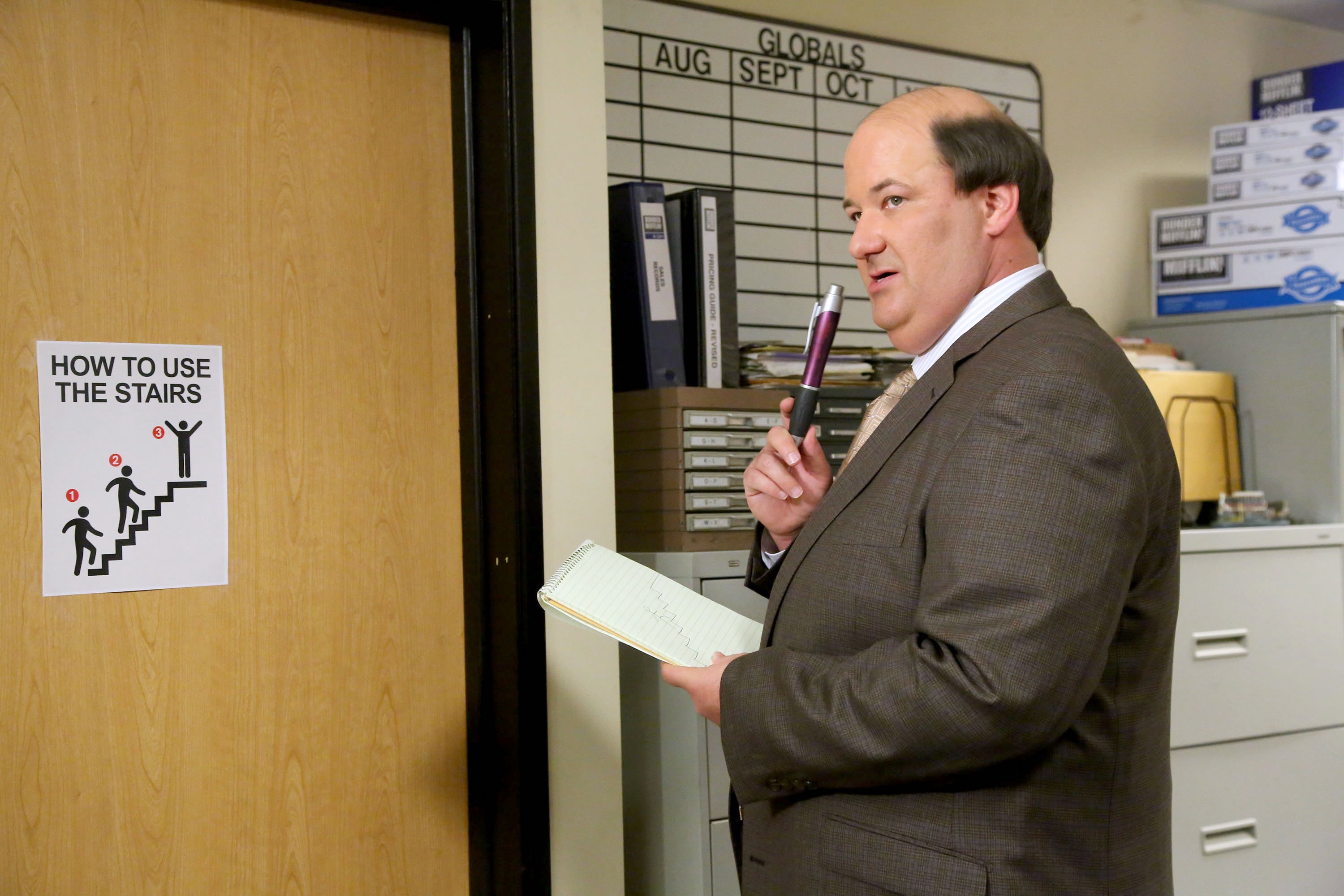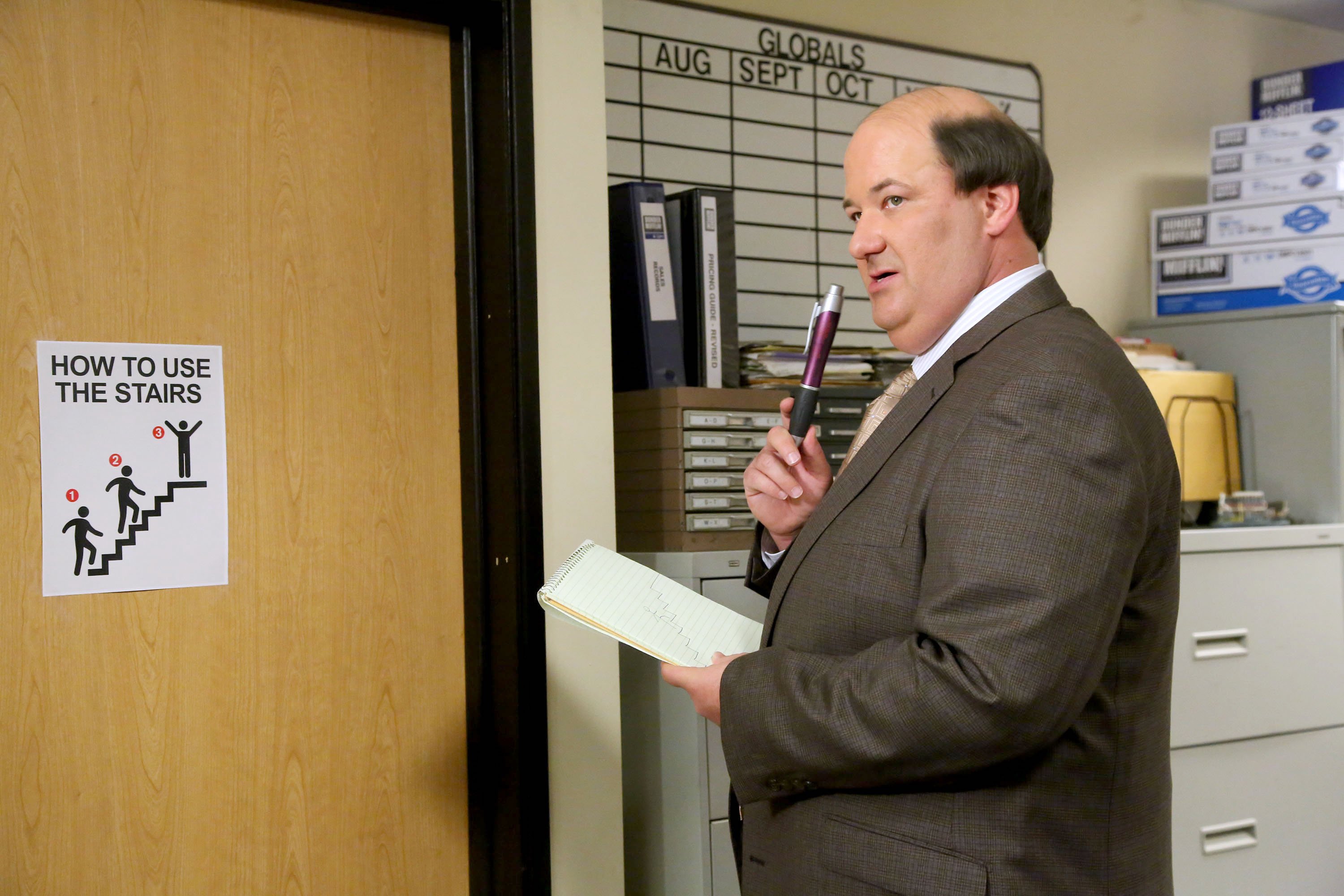
‘The Office’: What is Kevin Malone Actor Brian Baumgartner Up to Now?
Kevin Malone, played by Brian Baumgartner, is a fan-favorite character for many viewers of The Office. His dimwitted nature led to many of the show’s most hilarious moments, including his attempt to surprise his coworkers with a pot of chili. While many recognize Baumgartner because of his The Office role, he does keep busy with several cool projects.
Brian Baumgartner has appeared in several TV shows and movies

Before starring in The Office, Brian Baumgartner had several minor roles in TV shows, such as Arrested Development, CSI, and Everwood. In 2005, The Office debuted, and many grew to love his portrayal as Kevin due to his excellent delivery and performance. He had other small roles in shows like Mike & Molly, Hot in Cleveland, The Goldbergs, and Criminal Minds.
In 2007, he starred alongside Robin Williams and The Office co-star John Krasinski in License to Wed. Some of his other film credits include Four Christmases and Rumble.
Brian Baumgartner remains connected to Kevin in a podcast about ‘The Office’
Years after The Office ended, Baumgartner remains connected to the series. In 2020, he hosted a 12-episode podcast, An Oral History of The Office. The Spotify podcast featured interviews with the cast and creators of the series, along with never-before-heard stories from behind the scenes.
Following the success of this podcast, Baumgartner hosted and produced the iHeart Radio podcast The Office Deep Dive, similar to his previous Spotify podcast. That podcast ended in 2022, but Baumgartner continues his podcasting with Off the Beat. While this podcast does feature dives into The Office, there are many interviews with guests who have nothing to do with the series.
Baumgartner isn’t the only former Dunder Mifflin employee to capitalize on the show’s success. Jenna Fischer and Angela Kinsey host Office Ladies, sharing their personal stories from The Office and detailing iconic moments.
Baumgartner has a passion for golfing
In one episode of The Office, Kevin, Jim, and Andy golf with a client. However, the episode doesn’t reveal that Baumgartner is passionate about the sport outside the series. He is an accomplished golfer who has participated in many other celebrities’ tournaments. He has defeated legendary athletes such as Travis Kelce and Steph Curry in these tournaments.
In an interview with USA Today, Baumgartner discussed his passion for golfing and the amazing opportunities it’s given him. He said Dwight Feeney, Aaron Rodgers, and Michael Jordan were the most incredible group he ever played with. He also has played at many of the world’s most beautiful courses, including Pine Valley in New Jersey and Old Head in southwest Ireland. When asked who the best golfer is from The Office cast, he said he is by default.
“I can humbly say me because I’m the only one who played,” Baumgartner shared. “Steve Carell and I played a couple times – he moved and was near a course and wanted to get into it more and we’d play some. He plays hockey, and he had a good swing, but he just doesn’t really play that much.”


